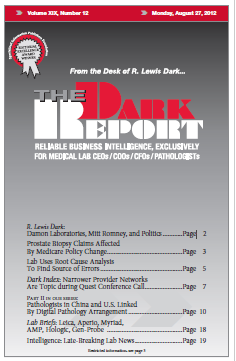SINCE MAY 1, 2012, the nation’s largest clinical laboratory company has had a new CEO, who is Stephen H. Rusckowski. The company’s second quarter conference call provided an opportunity to learn more about how he views Quest Diagnostics Incorporated. Conducted on July 19, the first topic of the call was the financial report. For Q2- […]
To access this post, you must purchase The Dark Report.


